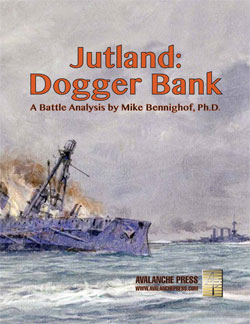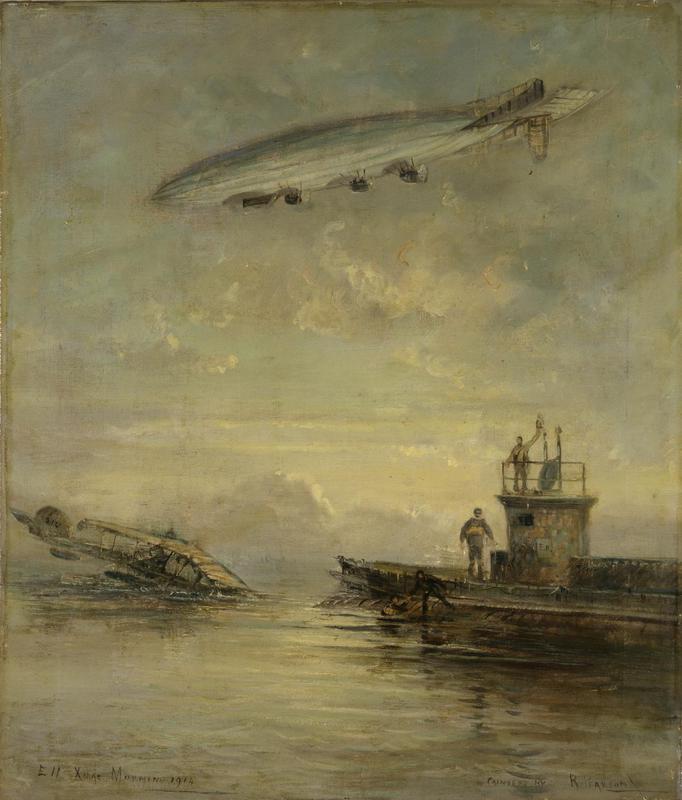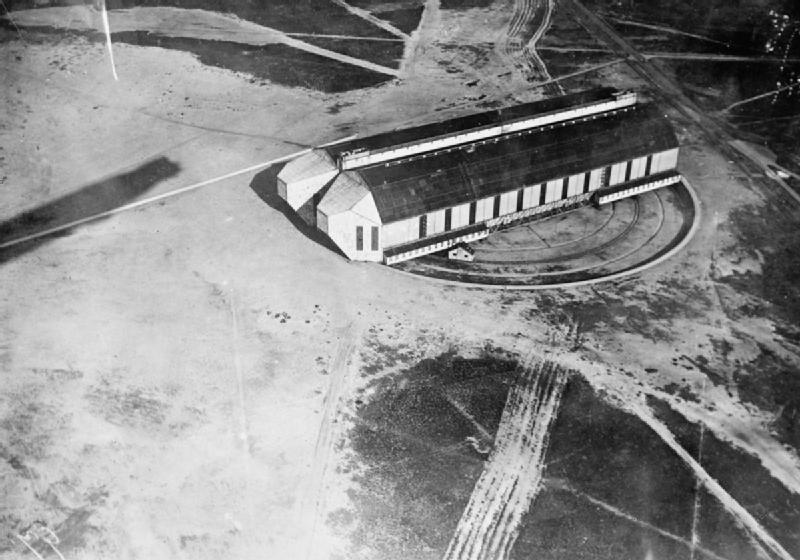| Jutland:
The Cuxhaven Raid, Part Two
By Mike Bennighof, Ph.D.
March 2021
 Zeppelins are not to be thought of as regards ships. Stupid great things, but very beautiful. It seemed a pity to shoot at them. Zeppelins are not to be thought of as regards ships. Stupid great things, but very beautiful. It seemed a pity to shoot at them.
- Commodore Reginald Tyrwhitt, Harwich Force
Tyrwhitt’s plan to attack the German zeppelin base at Cuxhaven (or wherever it might be found) would use his own Harwich Force of cruisers and destroyers plus three makeshift seaplane carriers converted from cross-Channel packet steamers. The Grand Feet would come out in support once again, with its battle cruiser screen, but this time farther north of Helgoland than in the earlier attempts.
 After the German sortie that became the Scarborough Raid and fears of a repeat action put a hold on approval, Tyrwhitt received permission to proceed. The Harwich Force and the carriers would set out on Christmas Eve 1914, with the attack to be made on Christmas Day. Officially the mission would be to scout the north German coast in search of the zeppelin base - that way even failure to find it could be painted as a success - but the unspoken order was clear that the zeppelins were to be found and destroyed. After the German sortie that became the Scarborough Raid and fears of a repeat action put a hold on approval, Tyrwhitt received permission to proceed. The Harwich Force and the carriers would set out on Christmas Eve 1914, with the attack to be made on Christmas Day. Officially the mission would be to scout the north German coast in search of the zeppelin base - that way even failure to find it could be painted as a success - but the unspoken order was clear that the zeppelins were to be found and destroyed.
The raid was timed to find the Germans distracted by the holiday, but Tyrwhitt quickly found his own men affected by Christmas cheer. The Royal Navy still provided a tot of rum as part of its sailors’ daily ration, and many men had hoarded part of these for weeks as well as stashing away additional supplies of alcohol, all in anticipation of the holiday. When the ships set out at 0500 on 24 December, it appears that many of the sailors were already drunk.
Along with the seaplane carriers Engadine, Riviera and Empress, Tyrwhitt brought two light cruisers and eight destroyers, with another cruiser and more destroyers trailing behind in distant support. That left his tiny force vulnerable to German attack, even more so when Empress fell behind with condenser problems and he split his warships to cover the two groups of carriers. The commodore hoped that such a small force might enter the Helgoland Bight just off the north German coast without provoking a German response.

Submarine E11 resuces a downed pilot, while Zeppelin L5 lurks overhead.
The Germans responded anyway, once the submarine U6 radioed an urgent spotting report. Two zeppelins, L5 and L6, were already in the air patrolling the Bight and now turned to seek the reported contact. A pair of German seaplanes took to the air from the base to Bochum. No surface units as yet responded, and when Empress caught up with her sisters at the launching point about 17 kilometers north of Helgoland, Tyrwhitt ordered the seaplanes to take off.
Blessed with a calm sea and clear skies, the carriers lowered nine planes onto the water. Two of them would not start and were taken back aboard their carriers while the remaining seven lumbered into the air. Launch operations took about an hour, with the aircraft heading southward just after 0700. The still air forced the aircraft to make long takeoff runs, burning up additional fuel, and once they reached the coast they ran into low-lying fog.
One plane accidentally flew over the airship sheds, which were not at Cuxhaven but at Nordholz, about 10 kilometers to the south-west. The pilot and observer did not recognize them for what they were, and ended up bombing a copse of trees. Another plane, with Lt. Erskine Childers serving as observer, flew over the Schillig Roads where Childers made detailed and accurate observations of three battle cruisers of the First Scouting Group and seven pre-dreadnought battleships along with two old light cruisers, ten destroyers and five large unidentified ships that Childers believed to be either transports or colliers.

The zeppelin sheds of Nordholz were not recognized as such.
Another plane saw ships at the main base of Wilhelmshaven, where the crew tossed bombs at the light cruiser Graudenz without effect, and the ship fired back at them, also without effect. One of the other planes bombed some cattle sheds on the coastal island of Langeoog, mistaking them for aircraft hangars, and one tried to bomb a passing u-boat.
Meanwhile, the British ships were under attack by German aircraft. Zeppelin L5 attempted to bomb the carrier Empress, which had again fallen behind her escorts. The zeppelin failed to hit the small ship with several bombs (her captain later claimed to have only attacked once and dropped the others to lighten ballast), while the carrier’s crew blazed away at the gasbag with rifles, hitting it seven times but doing no serious damage to ship or crew. Nearby British destroyer crews, feeling the effects of their Christmas tot, lined the rails and cheered the spectacle.
Next Zeppelin L6 took a turn at Empress, and then the two German seaplanes flew over and threw their tiny bombs. One managed a near-miss of the cruiser Undaunted, and this time the British put a few bullets into one of the seaplanes but could not bring it down.
Fortunately for the British air crew, the Germans had moved on by the time the British aircraft returned to their mother ships. Of the seven aircraft that set out, only three made it back to their carriers. Three more ditched at sea and their crews were recovered by the British submarine E11 just before it endured the first air attack against a submarine when Zeppelin L5 appeared. The zeppelin’s arrival forced the submarine’s commander to abandon thoughts of towing the seaplanes back to England and they were destroyed with machine-gun fire. The last seaplane ditched and its pilot was picked up by a Dutch fishing trawler.
 The raiders had failed to find the zeppelins or do any damage with their tiny bombs, but the detailed report filed by Childers impressed the Naval Intelligence section. Seaplanes clearly had some potential as weapons platforms, and immense value for reconnaissance. The Admiralty pressed ahead with plans to acquire more seaplanes and carriers for them. The Royal Navy claimed a great victory, and made good propaganda use of the affair (like in the lurid poster over there on the right). The raiders had failed to find the zeppelins or do any damage with their tiny bombs, but the detailed report filed by Childers impressed the Naval Intelligence section. Seaplanes clearly had some potential as weapons platforms, and immense value for reconnaissance. The Admiralty pressed ahead with plans to acquire more seaplanes and carriers for them. The Royal Navy claimed a great victory, and made good propaganda use of the affair (like in the lurid poster over there on the right).
Childers was mentioned in dispatches for his role in the Cuxhaven Raid, and later awarded the Distinguished Service Cross for similar recon work over Gallipoli. He ended the war working on targeting plans for the new Riyal Air Force’s upcoming bombing raids on German cities. The London-born Childers became a staunch supporter of Irish independence after the war, winning election to the Dáil (the new Parliament of the Irish Free State) as a member of Sinn Féin. He helped negotiate the Anglo-Irish Treaty in 1921, earning the enmity of ultra-nationalists who blamed him for the loss of Ulster among other things. He was arrested by Free State troops in November 1922 on the charge of possessing a revolver, and executed by firing squad two weeks later.
Click here to order Jutland right now.
You can order Jutland: Dogger Bank right here.
Please allow an additional six weeks for delivery.
Sign up for our newsletter right here. Your info will never be sold or transferred; we'll just use it to update you on new games and new offers.
Mike Bennighof is president of Avalanche Press and holds a doctorate in history from Emory University. A Fulbright Scholar and NASA Journalist in Space finalist, he has published more books, games and articles on historical subjects than anyone should.
He lives in Birmingham, Alabama with his wife, three children, and his Iron Dog, Leopold.
|
